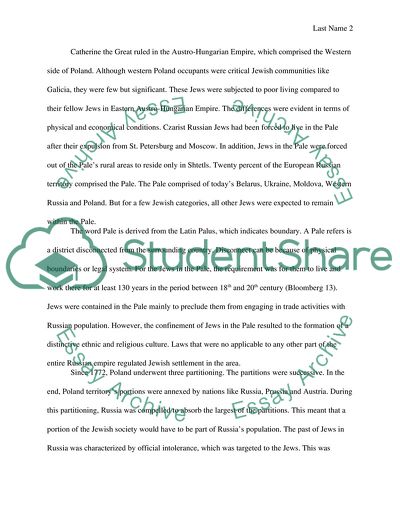Cite this document
(Life in the Pale of Settlement Research Paper Example | Topics and Well Written Essays - 2000 words, n.d.)
Life in the Pale of Settlement Research Paper Example | Topics and Well Written Essays - 2000 words. Retrieved from https://studentshare.org/history/1787938-life-in-the-pale-of-settlement
Life in the Pale of Settlement Research Paper Example | Topics and Well Written Essays - 2000 words. Retrieved from https://studentshare.org/history/1787938-life-in-the-pale-of-settlement
(Life in the Pale of Settlement Research Paper Example | Topics and Well Written Essays - 2000 Words)
Life in the Pale of Settlement Research Paper Example | Topics and Well Written Essays - 2000 Words. https://studentshare.org/history/1787938-life-in-the-pale-of-settlement.
Life in the Pale of Settlement Research Paper Example | Topics and Well Written Essays - 2000 Words. https://studentshare.org/history/1787938-life-in-the-pale-of-settlement.
“Life in the Pale of Settlement Research Paper Example | Topics and Well Written Essays - 2000 Words”, n.d. https://studentshare.org/history/1787938-life-in-the-pale-of-settlement.


